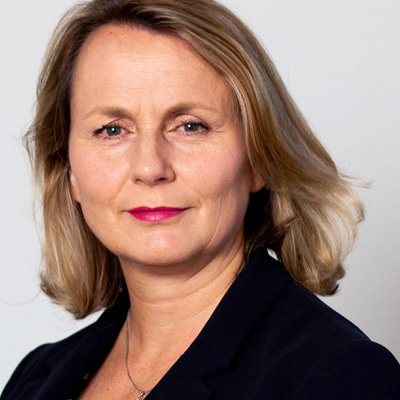
Tracy Dowling
Chief executive
Cambridgeshire and Peterborough NHS Foundation Trust
Tracy holds qualifications in radiography, an MBA and a management qualification from the Institute for Health Service Management. Before becoming chief executive, at Cambridgeshire and Peterborough NHS Foundation Trust, Tracy was chief officer for Cambridgeshire and Peterborough Clinical Commissioning Group , and prior to that held director-level roles in commissioning and the acute sector.
Q: Was there a particular job, opportunity or experience which convinced you to apply for the chief executive role?
There have been a few along the way that have been fundamental in my journey to chief executive. The first was the opportunity to be seconded from radiology to undertake a strategic review of neuro-rehabilitation services. This was a safe move, and confirmed that the skills I had developed within radiology management were transferable to areas where I was not relying on clinical experience. Another significant opportunity was through a High Potential Executive Programme where I gained insight into the NHS beyond the acute sector and decided that I would take time to undertake director level roles in commissioning and other sectors first so that by the time I did become a chief executive, I would have breadth and depth of experience across the NHS.
Q: How does your clinical background help you to perform effectively as a trust chief executive?
It surprises me how much my clinical background as a radiographer enables me to perform effectively as a chief executive. My clinical experience means I am comfortable having conversations (often in challenging circumstances) with patients and families. I am confident I can grasp clinical concepts quickly and confident to seek clarification if I don’t follow a clinical logic – the worst that can happen is I learn something new! And finally, working with clinical staff as a peer is second nature. My clinical background has also given me a solid foundation in risk management, knowing how to deliver good patient experience and high service standards and how to work effectively as both a member and as a leader of a team. These skills all transfer to organisational leadership and management.
It surprises me how much my clinical background as a radiographer enables me to perform effectively as a chief executive. My clinical experience means I am comfortable having conversations (often in challenging circumstances) with patients and families.
Q: "If I knew then what I know now…" – what is your advice for clinicians thinking about stepping in to a chief executive role?
I’d offer the following guidance. It really is a fantastic role and a genuine privilege. It is also something of a lifestyle choice! It’s important to be really clear about why you want to be a chief executive, what added value you will personally bring to the role and to the organisation, and what you want to achieve. Make sure you understand the corporate responsibilities and corporate governance as these responsibilities are significant. Expect to spend as much time outside of your organisation as inside it. Be comfortable to not necessarily have the answers – many of the challenges you are presented with do not have straightforward answers and if they did others would have already dealt with them! Finally, you are only as good as your team.
Q: What are the challenges you’ve faced balancing your priorities as a clinician and your responsibilities as a trust chief executive? How have you overcome these?
It was not possible as a radiographer to continue to practice and also to progress as a manager to an extent that would have led me to becoming a chief executive. I kept my professional registration for about two years while I made the transition into management and, although it was a difficult choice, I recognised that if I ever wanted to return to clinical practice that I should retrain and re-register.
I also recognised that to be a really effective manager and leader I should train professionally in that too. I completed an Open University Institute of Health Services Management certificate and followed this up with an MBA undertaken part time over two years, while still working full time. I have continued with professional development as a manager and as a leader, in much the same way as clinical staff would maintain competence through CPD.
It’s important to be really clear about why you want to be a chief executive, what added value you will personally bring to the role and to the organisation, and what you want to achieve. Make sure you understand the corporate responsibilities and corporate governance as these responsibilities are significant.
Q: What support have you had along the way to get to where you are?
Of particular note is that the superintendent radiographer who employed me as her deputy and coached me in general management. Then there are many chief executives who spotted my potential and gave me opportunities to broaden my experience. Some were supportive and coaching in style; others more demanding and performance driven. I learned from all of them and took time to develop my own style, which is probably somewhere between the two. Also of note are the female leaders I have worked for and worked with, who helped me develop my personal resilience and confidence.
Finally, as a chief executive, I do need a coach. It can be a lonely role and I find it invaluable to have someone who is knowledgeable but removed from the local system, and where it is safe to share thoughts and concepts while they are still forming. This safe space is really valuable to support reflection and thinking.
